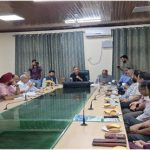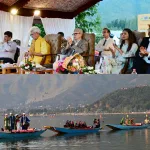It cannot be denied that economic prosperity is the main thrust of the heritage tourism activity. As development of heritage sites is not a stagnant issue. A monument once restored to a certain time frame in terms of its glory needs sustainability and ways and means to bear the costs of its maintenance. The heritage management agencies are the facilitators and tourism professionals and the marketers who bring the tourist gaze to the asset. It is the involvement of the local community that is the main stakeholder. As it is the part of their continuity, they are direct inheritors and descendants of this heritage in terms of being the primary stakeholders. The involvement of the locals in the heritage tourism serves two primary purposes. One they act the ambassadors and interpreters of the living heritage and two, they are the direct beneficiaries of the economic benefits in terms of employability. Moreover, UNESCO has devised the strategy to uphold the economic rights of the people and at the same time made it the inherent tool to preserve the intangible heritage for the posterity as the living tradition.It has designated it as traditional, contemporary and living at the same time. It has given it inclusive paradigm having the elements of representative community based identity. It encourages the artisans and makes them confident to pursue the traditions as the lucrative modes of earning and at the same time being proud of continuing the tradition that has given them identity. So preservation of heritage is implemented by keeping it in continuity with community involvement and technical support based on international guidelines. Younger generation becomes the predominant representative of the heritage in this case as they gain employment and at the same time carry forward the legacy that has shaped their community goals and moorings as the people having their identity among the multitude of other identities. It has the element of economic self sufficiency and entrepreneurship inherent in its mechanism. This strategy has acted as the blessing in restoring the community traditions of the indigenous communities having unique heritage. This strategy enhances the interaction of the community and its heritage with the diverse people in terms of heritage tourism ;who spread the good word of mouth about the heritage when they move in other social spaces.It is a soft tool to preserve the cultural heritage by interaction and awareness. The issue that emerges from this discussion is that there is a need to use a substantial income acquired from heritage tourism activities for safeguarding the heritage at various levels of conservation and restoration. That is why critical issue of division of labour and hence division of profit from the economic activity of heritage tourism has emerged as a bone of contention at many times while pursuing the heritage tourism. The reason being that in this business not only the locals but the outside industries are also involved at various levels .Tourism cannot thrive in isolation it involves the services of various service providers like hotels, transport, railways, airways and many others. The stakes of the government at the state level are an important factor. Thus division of revenue from the business between local and state level has posed many challenges among the stakeholders. Community involvement has many facets in tourism ,especially the heritage tourism as the involvement of the communities as the stakeholders in terms of their involvement at the destination area as the artisans raises issues that rake controversies. Distribution of the revenues and the management issues have rendered it difficult to draw physical boundaries between the work area of various stakeholders. No doubt the significant chunk of the revenue from heritage tourism lies with the locals, still there arises dispute over the equitability on the issue of money allocation. This issue mainly arises in case of the intangible heritage; the reason being that ownership is fragile. The conflict arises when the community feels that intangible heritage is the ownership of the group and as such any economic benefit should go to the community. This challenge has raked many issues but the international guidelines have addressed this contingency.
Heritage Tourism-Issues & Challenges

Sign Up For Daily Newsletter
Be keep up! Get the latest breaking news delivered straight to your inbox.
By signing up, you agree to our Terms of Use and acknowledge the data practices in our Privacy Policy. You may unsubscribe at any time.
Leave a Comment Leave a Comment
Stay Connected
Latest News
Recent Posts
- J&K govt warns meat sellers, e-commerce platforms to comply with food safety rules
- Youth voices now roar in stadiums, not streets: LG Sinha
- JKP at forefront in fight against human trafficking: Spl DG Coordination
- Khelo India Water Sports Fest marks new era for J&K youth: CM
- Woman’s death in Shopian sparks protests in Anantnag







